
IN SOCIAL’S ULTIMATE ECOMMERCE
BRAND GUIDE TO
BLACK FRIDAY // CYBER MONDAY 2024
THE COUNTDOWN IS ON
00
Days00
Hours00
Minutes00
SecondsWAIT, WHAT IS “BFCM”?
BLACK
FRIDAY
CYBER
MONDAY
If you own an Ecommerce business, or any retail business with an Ecommerce component, you know that BFCM is the biggest sales period of the year. (If you didn’t, that’s ok, that’s why you’re here!)
Did you know that it’s already the holiday season for us Ecommerce agencies? Yeah, that’s right, we at In Social have been talking about client holiday plans since July!
As a full-service marketing agency, we act as our clients’ outsourced marketing department—strategizing, planning, developing, implementing, deploying, managing, and optimizing their marketing efforts across all digital touchpoints.
If that seems like a lot of buzzwords, we promise you, it’s not. Those are the steps needed to pull off any successful marketing campaign, and running a successful BFCM campaign is no different. Well, except for the fact that a BFCM campaign will most likely drive the most sales you’ll have made all year!
So, how do you run a successful BFCM campaign? That’s what we’re here to tell you! Read on, and get In Social’s Ultimate Ecommerce Brand Guide to BFCM & corresponding workbook!
 |
Guess What! Hidden throughout this guide are some exclusive discounts from our softwares partners (and even some Ecomm clients). You’ll have to read through the guide to find them 👀 |
SKIP AHEAD TO THE MOST IMPORTANT BFCM INFO!
There is a lot of information here (70 Google Doc pages worth, to be exact!), so to keep it easy, here are some quick links to key Black Friday Cyber Monday information:

STRATEGIZING
12+ weeks out
Start with Data
You’ve probably downloaded this guide because you’ve realized you need to do something for BFCM and aren’t sure what. Or, maybe, you’ve tried to do something for previous BFCMs, and they haven’t gone as well as you had hoped. Whichever camp you’re in, you’re going to need to start from the same place: data.
At In Social, no idea comes without data to back it up. Sure, there’s always a gut feeling about what we think could work, or industry knowledge to give us a starting point, but that’s nothing without comparing it to the data we’ve already collected for our clients. What are the data points we look at to help us determine what to do for BFCM? Here’s a rough outline of what helps us come up with a winning BFCM campaign:
Data points to analyze |
|
Top Selling Product(s) on 1st Order |
Which product(s) are most purchased by a first-time customer? |
Top Selling Product(s) on 2nd+ Order |
Which product(s) are most purchased by customers after their first purchase? |
Customer LTV/Average # of Orders |
What is the average Lifetime Value (LTV) or the average number of orders placed by a customer during the time they are a customer of the client? |
Average Order Value (AOV) |
What is the average value of orders on a single checkout? |
Biggest Margin Product(s) |
Which products drive the biggest margin? |
Best Performing Ad Audience |
Which audience target drives the best ROAS (Return on Ad Spend) per advertising channel? |
Best Performing Ad Creative |
Which copy, creative, promise, product, and value proposition is working best? Which imagery or video is working best and why? |
Most Viewed Website Page |
Which pages do site visitors spend the most time on? (Break it down into non-purchasers, 1st-time purchasers, and repeat purchasers.) |
Most Organically Engaged Product |
Which products used in organic social content drive the most engagement? |
Top Performing Discount(s) |
What discount(s) has/have driven the most conversions? |
Best Performing Messaging |
What messaging has driven the most conversions? |
How do we use this data? It varies, depending on the client and their product offering/niche. That said, these data points still inform what product(s) could be put on sale or bundled, which discounts to offer, and what customer target to go after.
EXAMPLE
At In Social, we have a client who sells a Starter SKU that is a great entry product into the rest of their product line. The data tells us that there’s a huge return-purchase rate from Starter SKU purchasers, who then come back and buy other products from this brand.
With such a high return purchase rate, it makes sense to offer a discount on that SKU, knowing that a lot of the customers will then come back for more (and spend more.) We also know that a store-wide 40% discount for this brand is rare, so when they offer it, they get a huge influx of orders, especially from new customers (who bought the starter SKU.)
Knowing that 40% is a very rare discount (and that it really drives sales) and that people who buy the Starter SKU usually purchase again, the data tells us that it’s worth the cost of giving a big discount for BFCM, as customers will come back and purchase again.
 |
Key detail: Before reading on and taking any further steps (unless you are planning on using the BFCM sale as a loss-leader to increase your market share) use this next step to make sure that the discount you are offering is still profitable. How do you do this? Here is a very high-level way to look at your promotional offer: |
For a single product on sale: |
| First, take the product price [Product], then minus cost of the product (Cost of Goods Sold) [COGS] and the product discount amount [Discount] to get your product profit:
[Product] – [COGS] – [Discount] = [BFCM Unit Profit] $40 – $5 – (10%[$4]) = $31 |
For a site-wide sale: |
| First, take the Average Order Value of your store [AOV], then minus the Average Cost per Order (ACO) [ACO] and the sale discount amount [Discount] to get your average BFCM order profit:
[AOV] – [ACO] – [Discount] = [BFCM Unit Profit] $150 – $40 – (40% [$60]) = $50 |
In the examples above, both promos seem to be profitable enough to continue on with. In the planning stage (next), we provide more layers of calculations to continue to determine that they make sense, and how much you can invest in this effort for it to be worth it.
The list of data points to analyze (above) are just a few of the metrics we use to assess what would make the best BFCM sale – it’s just a starting point! We always recommend digging into the data as far as you can go, because the more data, the more accurate a picture it will paint. And, it will often tell you the exact strategy you need to run with. Ah, the magic of numbers ✨ (and why we live and die by data here at In Social!)
What if there’s no data?
Ok wait, are you saying that you don’t have any data or are you saying that you’re a new business with no data to leverage? Either, way that’s ok, because you’ll always have to start somewhere!
Instead of leaning into historical data, new businesses or businesses without it can look to competitors! What sales have your competitors run for past BFCM sales? What messaging have they used? What product offerings have they made available? Use their past promotions as a guide for what you could offer. If the idea was good enough for them, why can’t it be good enough for you?
| How do you find what your competitors have done in the past? Here are some of our favorite competitive research tools:
→ Meta Ad Library: simply type in your competitor’s page username, et voila! All the ads they are running will appear. → Milled: “the search engine for emails” is exactly what it is! Find what emails your competitors have been sending, as well as the promos that go along with them! → Google Keyword Planner: While it doesn’t tell you what your competitors’ ad strategies are, it does show you which keywords are being bid on and for how much, including brand terms. *Must be logged into your Google Ads account to access this planner! |

PLANNING
11+ weeks out
BFCM is not just a sale. Black Friday Cyber Monday is the holiday season for the holiday season. Meaning: it’s not just a weekend sale, but it’s often upwards of 6-7 weeks long! Yeah, it’s the sale of all sales that comes around but once a year. And it keeps getting bigger and bigger.
Like, you know how Halloween products seem to come out earlier and earlier every year? You’re still in your shorts and t-shirt but suddenly everything smells like pumpkin spice? The giant lawn Skeleton sells out by the end of September? Well, over the last few years, the same thing has happened with BFCM – Black Friday Cyber Monday sales have gotten much longer. Instead of launching the day of Black Friday (Nov. 29th), promotions have started to appear as early as Nov. 1st! Not only that, brands have been running those same promotions into the first 2 weeks of December, giving consumers that last bit of time to buy a gift online and have it arrive in time for Christmas Eve.
DID YOU KNOW?
Did you know that, for many companies in the retail space, there is also a Q5?
“What!” You say! “That math doesn’t work, there can’t be 5 quarters!” We know, we know, just follow us here –
Q5 refers to that 2-week period between the day after Christmas and New Year’s Eve when people continue to spend. Consumers are still buying gifts for others, but they are also spending on gifts for themselves!
How many times have you not gotten what was on your wishlist? That’s what Q5 is for.
Don’t leave Q5 dollars on the table! Either keep your BFCM campaign running up until Jan. 1st, or (if you have enough time and resources), plan a special 2-week post-Christmas event to rake in every last bit of revenue you can!
Of course, we do still have clients that stick to offering their BFCM sale strictly between November 29th to December 2nd (Cyber Monday), but that short window of time requires a much different strategy than a multi-week long sale. Short sale windows mean that we need to plan exactly how we ramp up the sale in order to maximize conversion, battling against advertising algorithms that take days to optimize and emails that need urgency in order to be opened in time. It means teasers, audience building, and begging the digital overlords that your content will reach those you are targeting in time.
As more and more brands launch their BFCM offers on the 1st of November, it really doesn’t matter whether you’re launching alongside them, or you’re taking the weekend-only promotion route; either way, you will still have to prepare to beat the influx of competition during BFCM. No longer can you launch a sale on the day of and expect your customers to see it—they just won’t.
With all that in mind, it’s important to remember that Christmas is not the only celebratory holiday during Q4. Here’s a calendar of all the major North American holidays (and shopping excuses) during Q4 ‘24. Use this to plan your promotions around:
NORTH AMERICAN HOLIDAY CALENDAR Q4, 2024 |
|||
|
Thanksgiving Canada OCT 14*Time to start planning for New Years!
|
Día de los Muertos Mexico NOV 2
|
Veterans Day US* NOV 11*This is a day to thank veterans, often through special offers
|
Remembrance Day Canada* NOV 11*Canadians see this as a day of mourning, not as a day of celebration
|
|
Diwali NOV 1
|
Thanksgiving US NOV 28
|
Black Friday NOV 29
|
Small Business Saturday NOV 30
|
|
Cyber Monday DEC 2
|
Giving Tuesday DEC 3*Meant as a day to give back to charity, so any sales should be donating proceeds
|
Last Day to Ship DEC 15
|
Festivus DEC 23
|
|
Christmas Eve DEC 24
|
Hanukkah DEC 25 – JAN 2
|
Christmas Day DEC. 25
|
Boxing Day Canada DEC 26
|
Plan for the long haul.
(And, yes, Canadian Thanksgiving is when you should start planning for New Year’s!)
Is the strategy possible?
So you’ve seen the calendar, and you’ve used data or competitive research to create your BFCM campaign idea—what’s next? You’ll need to make sure it’s actually possible and feasible. AKA will you actually make money?
For instance, giving 40% off for Black Friday is a great deal for your customers, and a deal they’ll surely jump on. However, if your margin is only 20% of the full-price, you’re going to lose quite a bit of money with that huge discount.
Of course, you could choose to use BFCM as a loss-leader event to expand your customer base, but if you do, you’ll also need to make sure that your return customer rate is high enough (by looking at your data in the previous step) that you will make that loss back on repeat purchases after BFCM is over.
Don’t forget, if you’re going to be giving any sort of discount out and plan on selling a lot of product, you’ll need to ensure that you actually have enough inventory of the product you are putting on sale and that you have enough product to carry you over on repeat purchases into the new year. Nothing is worse than when a customer is ready to purchase for a second time, only to find the product out of stock!
To confirm that your BFCM strategy is feasible, step back from your business and take a good look at what you have to work with. Look at your human capital and cost, inventory and supply chains, budgets for labor and ad spend, and logistics and fulfillment, and assess if what you want to do is possible. Luckily, we have a handy checklist to get you started (and it’s also in our workbook template!):
Campaign feasibility
What I have |
What I need help with |
What I need to do |
|
MarginsWhat discount/promo are you planning on offering, and does it make financial sense? |
Example:
The data tells me that 40% off brings in the most sales, but that leaves me with a very tight margin |
Example:
I need to better understand my COGs to assess if this sale will generate revenue to make the effort worthwhile |
Example:
Calculate my margins after discount to determine my investment into BFCM and what my minimum return needs to be to be profitable |
BudgetWhat budgets are you able to put towards marketing and advertising in order to make this campaign successful? |
Example:
I have a total of $20,000 for both marketing and advertising |
Example:
I need advice on how to spend that money in order to make at least a 3x return on each sale to generate a profit |
Example:
I need to speak to my agency about how to spend my budget across marketing channels, agency fees, and ad spend |
Human CapitalWho are the people you have to help you execute and manage a successful BFCM campaign? What can they do? |
Example:
Myself, to come up with the idea and oversee all the components of the campaign My Marketing Manager, to manage the day-to-day execution of the campaign and oversee my agency |
Example:
I do not have enough internal resources to execute an omnichannel campaign and need my agency to help |
Example:
Ask my agency to provide expert advice on how to best spend my budget on marketing efforts |
InventoryWhat inventory do you have readily available, or can you get in time for BFCM? |
Example:
My best performing first purchase product is X I have an overstock of X |
Example:
My best performing 2nd purchase is Y, but I need more inventory |
Example:
I need to reach out to my vendor to ensure I have enough Y inventory in my warehouse by November |
LogisticsWill your warehouse be able to handle an influx of orders? Will your customer service team be able to handle an influx in CX inquiries? |
Example:
I have an external 3PL (fulfillment house) who I use to ship 100 orders a day I have the ability to handle 10 CX tickets per day |
Example:
I need to ask my 3PL if they are staffed to handle an influx of orders I do not have enough internal resources to handle an increase in customer service inquiries |
Example:
Determine if we will add another 3PL to handle influx Find an outsourced Customer Service team to manage the influx of messages I will get from an increase in orders |
Timelines
Now that you’ve determined that your strategy is possible (or went back and forth between strategy and planning until it is), it’s time to ensure that you have enough time to pull it all off. If you’re reading this now, every second counts, so you’ll need to make the most of all the time you have left.
Below, you’ll find the In Social BFCM roadmap that lists out every single step we follow when launching BFCM campaigns for our clients, to make sure they (and you!) don’t miss the biggest buying season of the year. (Again, this is also available in our handy workbook!)
BFCM ROADMAP |
|
StrategyMore than 12 weeks out |
Pull historical data and analyze to determine what your BFCM promo should be, or if you do not have historical data, run competitor research on their BFCM campaigns to give you ideas for yours |
| If you have no data, set up your tracking (Pixels, GA4)! | |
Planning11 weeks out |
Assess campaign feasibility & budget |
| Create a work-back schedule from launch based on key dates | |
| Write out your campaign brief with action items (& contingency plans) & share with your team | |
| Use this time for testing!
*Pre-BFCM strategy |
|
| Start lead/traffic generating efforts
*Pre-BFCM strategy |
|
Developing5-10 weeks out |
Start collecting creative assets through photo or video shoots, UGC/influencer content |
| Work on content development (copywriting, asset development) | |
| Review/rework policies (shipping/return) for the holiday season | |
| Audit your existing promises and offers to identify BFCM changes (email automations, upsells) | |
| Develop on-site experiences (landing pages, on-site quizzes, custom carts + GWPs) | |
Implementing1-4 weeks out |
Campaign action item check-in |
| Fulfillment run-through | |
| On-site experience testing | |
| CS team training | |
| Ad building + catalog syncing | |
| Email automation adjustments | |
| Team check-in on BFCM campaign | |
| Full campaign proofing (like our “Last Eyes” process) across social, email, web, ads, and CS! | |
DeployingLaunch day! |
🚀Launch it all! |
Management & OptimizationFor as long as the campaign runs |
Check, check, check! |
| Turn off what’s not working | |
| Scale 📈increase campaign budgets if you’re hitting your KPIs | |
Bonus: DebriefingAt the end of the campaign |
Collect data on the campaign, analyze, takeaways |
PS: we use this same roadmap for all campaigns, not just BFCM. And yes, we’re going to be using this for planning New Year’s promos in the coming weeks!
Budgets
Marketing for a Black Friday Cyber Monday sale takes more than just planning out timelines – it also requires budget.
While BFCM can (and should!) be the most profitable time of the year for an Ecommerce business, if not planned properly, it could actually end up as the most expensive. Ensuring that the effort and financial investment you put into BFCM will drive more in returns is a critical step in the BFCM process.
So, how do you make sure it’ll all be worth it? Our calculations below will help flush out the rest.
During the planning stage (above), you would have already calculated the profit margin on your product or average order value, minus the average cost per order/COGs, and subtracted the discount to determine your expected BFCM profit [BFCM Profit]:
|
[AOV] – [ACO] – [Discount] = [BFCM Unit Profit] $150 – $40 – (40% [$60]) = $50 |
Once you’ve done that, put the BFCM profit number aside. Now, look at the BFCM order goal you are aiming to achieve this year. It could be based on last year’s performance, or maybe 10% higher this year! Whatever the number is, write it down. [BFCM Order Goal]
Next, multiply your [BFCM Unit Profit] by your [BFCM Order Goal] to calculate your potential BFCM profit or [BFCM Gross Profit].
|
[BFCM Unit Profit] x [BFCM Order Goal] = [BFCM Gross Profit] $50 x 5,000 = $250,000! |
Woo, that’s a great number, right? It is, but you can’t stop there!
Next, look at your historical CPA (Cost per Acquisition) to determine how much it would cost to acquire a customer through measured channels (AKA channels where you can actually see success or failure through numbers!) Here, we’re using paid acquisition from advertising efforts. If you have CPA data from last year’s BFCM, use the average number (though, keep in mind it may not be the same this year!), and write that down. [CPA]
Next multiply your BFCM Order Goal with your (estimated) CPA to get your Acquisition Spend:
|
[CPA] x [BFCM Order Goal] = [Acquisition Spend] 5,000 x $20 = $100,000 |
Pit stop: based on our example numbers above, the potential revenue is more than the acquisition spend to reach it, which means we can continue to explore this campaign! If you are suddenly seeing negatives, it’s time to go back up to the strategy stage, and try again! (See why we started planning so early?) Anyway, let’s continue:
You can’t forget that there is still the cost of creating the things that acquire the customers AKA actually marketing your Black Friday Cyber Monday promotion!
It’s time to look at the cost per hour to work on your marketing efforts and write them down as [Hourly Fee]. Next, look at how many hours need to be spent to accomplish the campaign. This time may be spent by an agency or it may be time spent by your in-house team, but however many hours need to go into this BFCM campaign should be written down as [Marketing Hours]. Not sure how many hours you’ll need? Scroll down to the work-back schedule to find out. Multiply the two together and you’ll get your marketing cost or [BFCM Labor Cost].
|
[Hourly Fee] x [Marketing Hours] = [BFCM Labor Cost] $150 x 142 hours = $21,300 |
If you have a fixed cost for the [BFCM Labor Cost] such as salaries, you can use that instead. Keep in mind, however, that even if you’re using an in-house team to build your BFCM campaign, there’s an opportunity cost for their time to spent on this campaign, vs another or ongoing efforts. Calculating their time as an hourly cost can give you a better picture of your investment.
Last but not least, it’s time to put all the numbers together to calculate your projected BFCM profit:
|
[BFCM Gross Profit] – [Acquisition spend] – [BFCM Labor Cost] = [BFCM Total Profit] $250,000 – $100,000 – $21,300 = $128,700 |
 |
Key detail: the formulas above do not calculate a full MER (Marketing Efficiency Ratio). If you’ve done the calculations above and your margin is slim, we’d recommend calculating your full MER to fully confirm feasibility. MER calculations typically include the cost of software, office or warehousing space, packing and shipping costs, etc. To get a full picture of your MER, we recommend subtracting those numbers from the [BFCM Total Profit], especially if the numbers are tight. |
At a high-level, the math in the example above shows that this sale will be successful. It also shows that it has ample room for scaling up acquisition spend, and has some room for an over-expenditure on marketing labor costs. Ad spend and labor costs are the most variable costs you’ll deal with, and ones that can get out of hand quickly, if you aren’t careful! Leaving yourself room in just in case is always a good idea. So, if you do this math and find that your profit is too tight to have any room for flexibility on those variable costs, you may want to rethink your offer.
One last thing: did you notice that we don’t reference subscription products in our strategy or planning stages? That’s because we recommend considering only a customer’s first purchase of a subscription product as the value in your calculations. Subscription models can be amazing for generating Monthly Recurring Revenue (MRR), increasing customer Lifetime Value (LTV), and overall ROI, however, we prefer to treat the recurring revenue as bonus money. (That might just be an us thing 🤷♀️ ) That said, we definitely recommend adding subscription models to your business, and our friends at Recharge are one of the best apps for that! Email us at bfcm@insocial.ca if you want to learn more about Recharge and get access to our exclusive perks!
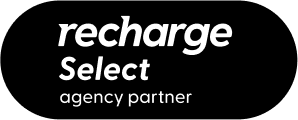
Work-back schedule
As you saw from our Holiday Calendar, there are plenty of important dates to choose from for your BFCM sale! Many brands choose Nov. 1st as their campaign start date so that they can take advantage of the full buying season. It also gives them time to analyze and iterate on their strategies to improve their KPIs while the campaign runs. Other brands choose to offer exclusive, limited-time sales, as they don’t want the overhead cost of a long running campaign, or they just want their brand to be more exclusive or less discount-y! Whatever option you choose, you need to understand the reality of how long it will take to launch a campaign. That’s why we always recommend building a work-back schedule from the date of your campaign launch.
If you already use a project management tool internally, awesome! Lean into it! If you’re looking for one, we use Teamwork (it has a free plan!), for its robust feature set. Sometimes, a spreadsheet is all you need!
 |
Important note: the examples below are placeholders to show how to think about content, not the type or cadence of content we’d recommend for BFCM. The actual content strategy is dependent on your brand, your BFCM offer, your marketing channels, your resources, and your budget! Need help with content strategy? Shoot us a note: bfcm@insocial.ca. Otherwise, read on! |
Once you know what tool you’re going to use to create your work-back schedule, start by filling in your launch date followed by the date you can start working on your campaign. 10 weeks to go? You can make it happen!
Next, list out all the campaign touchpoints you want to hit, which segments you want to target, and how often you want to hit them during the length of the campaign. It should look something like the example below (which you can also find in our handy workbook!)
Channel |
Deliverable |
Organic Social |
Facebook: 10 posts |
| Instagram: 10 posts | |
| Reels: 5 posts / cross-shared on FB | |
| Pinterest: 10 posts | |
| TikTok: 10 videos | |
Email & SMS Campaigns |
VIP Customer Segment: 3 campaigns |
| Customers who purchased the last 180 days: 5 campaigns | |
| Everyone else: 2 campaigns | |
Ad Campaigns |
Meta Promo ToF: 2 ad sets, 6 ads each
(Top of Funnel) |
| Meta Promo BoF: 1 ad set, 4 ads
(Bottom of Funnel) |
|
| Google BFCM extensions: 5 extensions | |
Website |
BFCM Landing page |
Now that you have what you want to accomplish, start adding what steps need to take place in order to create that deliverable.
Your updated chart should look like this:
Channel |
Deliverable |
Action Items |
Organic Social |
Facebook: 10 posts | Develop strategy, write copy, content creation, design graphics, reviewing, editing, proofing, scheduling. |
| Instagram: 10 posts | Develop strategy, write copy, content creation, design graphics, reviewing, editing, proofing, scheduling. | |
| Reels: 5 posts / cross-shared on FB | Develop strategy, write copy, film video content, edit videos reviewing, editing, proofing, scheduling. | |
| Pinterest: 10 posts | Develop strategy, write copy, design graphics, reviewing, editing, proofing, scheduling. | |
| TikTok: 10 videos | Develop strategy, write copy, film video content, video editing, reviewing, editing, proofing, scheduling. | |
Email & SMS Campaigns |
VIP Customer Segment: 3 campaigns | Develop strategy, write copy, design, building, reviewing, editing, testing, proofing, scheduling |
| Customers who purchased the last 180 days: 5 campaigns | Develop strategy, write copy, design, building, reviewing, editing, testing, proofing, scheduling | |
| Everyone else: 2 campaigns | Develop strategy, write copy, design, building, reviewing, editing, testing, proofing, scheduling | |
Ad Campaigns |
Meta Promo ToF: 2 ad sets, 6 ads each
(Top of Funnel) |
Develop strategy, write copy, design ad assets, reviewing, editing, campaign building, proofing, scheduling |
| Meta Promo BoF: 1 ad set, 4 ads
(Bottom of Funnel) |
Develop strategy, write copy, design ad assets, reviewing, editing, campaign building, proofing, scheduling | |
| Google BFCM extensions: 5 extensions | Develop strategy, write copy, reviewing, editing, building, proofing, scheduling | |
Website |
BFCM Landing page | Develop strategy, write copy, page mockup design, reviewing, editing, page building, proofing, testing, QA |
Once you have all the deliverables you want to prepare, and the steps required to develop them, add another layer to this by writing out how long each deliverable realistically takes to complete. As you see above, we’re referring to all the time it takes to complete all the tasks laid out. You may think that designing an email takes 3 hours (and it probably does), but what about the steps surrounding designing the email? Suddenly, the time is up to 7 hours, 4 more than you thought!
That said, if you’re employing our Full Circle Approach (see below), there will be major economies of scale. If you have your web team mocking up a landing page design, the assets they use can be shared cross-team so other deliverables can leverage the same design assets and copy, saving a lot of time!
Your updated chart should look like this:
Channel |
Deliverable |
Action Items |
Time Estimate |
Organic Social |
Facebook: 10 posts | Develop strategy, write copy, content creation, design graphics, reviewing, editing, proofing, scheduling. | 4 hours |
| Instagram: 10 posts | Develop strategy, write copy, content creation, design graphics, reviewing, editing, proofing, scheduling. | 2 hours | |
| Reels: 5 posts / cross-shared on FB | Develop strategy, write copy, film video content, edit videos reviewing, editing, proofing, scheduling. | 7 hours | |
| Pinterest: 10 posts | Develop strategy, write copy, design graphics, reviewing, editing, proofing, scheduling. | 2 hours | |
| TikTok: 10 videos | Develop strategy, write copy, film video content, video editing, reviewing, editing, proofing, scheduling. | 10 hours | |
Email & SMS Campaigns |
VIP Customer Segment: 3 campaigns | Develop strategy, write copy, design, building, reviewing, editing, testing, proofing, scheduling | 21 hours |
| Customers who purchased the last 180 days: 5 campaigns | Develop strategy, write copy, design, building, reviewing, editing, testing, proofing, scheduling | 30 hours | |
| Everyone else: 2 campaigns | Develop strategy, write copy, design, building, reviewing, editing, testing, proofing, scheduling | 14 hours | |
Ad Campaigns |
Meta Promo ToF: 2 ad sets, 6 ads each
(Top of Funnel) |
Develop strategy, write copy, design ad assets, reviewing, editing, campaign building, proofing, scheduling | 20 hours |
| Meta Promo BoF: 1 ad set, 4 ads
(Bottom of Funnel) |
Develop strategy, write copy, design ad assets, reviewing, editing, campaign building, proofing, scheduling | 10 hours | |
| Google BFCM extensions: 5 extensions | Develop strategy, write copy, reviewing, editing, building, proofing, scheduling | 2 hours | |
Website |
BFCM Landing page | Develop strategy, write copy, page mockup design, reviewing, editing, page building, proofing, testing, QA | 20 hours |
If you tally up the total (and this chart is by no means all-inclusive of what you can employ for your BFCM sale), you get 142 hours, which is roughly a total of 6 days. That seems doable, right? That’s only if someone was working 24 hours a day.
That’s not all! If you want to leverage economies of scale, and, let’s say, use your landing page copy and design assets to dictate your email, organic social, and ad copy and assets, you’ll need the landing page to be done first in order to move on to the other tasks. Those 20 hours to complete the landing page (or at least 10 to finalize half of it before moving on), are at least 2-3 days before any other tasks can begin.
That’s where the last step of planning comes in—layering in actual task completion dates based on the hour allocations. Go into your project management tool, or spreadsheet, and start listing out your deliverables and associated tasks in the order you want them completed. Then, starting from the top, add the hours it will take to complete each task within the deliverable, moving them along days as the hours fill up. If your first task takes 3 hours, and the next one takes 2, that’s about as much as you’ll get done in a day (5 hours + 2 for buffer time +1 for lunch break = 8 hours). Then, continue on to the next task and the next one, until you have all your tasks, their hour allocations, and their completion dates listed out.
It’s also important to keep in mind your human resources. Do you have 1 person working on all of these things, or multiple people (or an agency), who can support multiple efforts at once? Keeping economy-of-scale timelines in mind, you may be able to find some ways to speed up the process.
If you use a tool that has a “Gantt” view, or a view across multiple dates, it should look something like this with the end date being the Milestone in the little diamond! Demo shot from our friends at Teamwork):
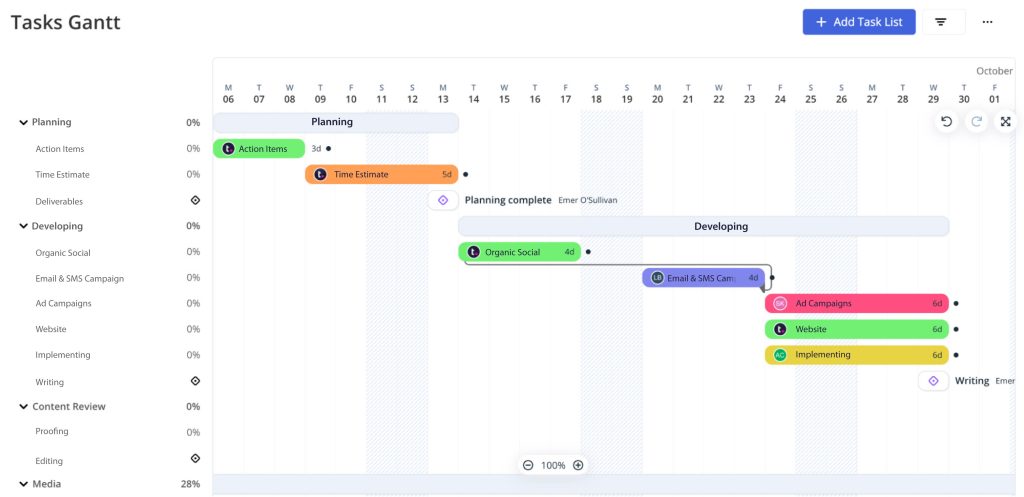
Now for the best part—what day is the last task scheduled to be completed? Is it before your launch day? If so, AMAZING! You are ready to get working.
| If it’s not? You’ll need to either:
→ Cut down on the deliverables for the sale; → Recruit additional team members, freelancers, or agencies to take some of the load; → Look deeper for areas of efficiency and economies of scale to speed things up. |
PS: don’t forget to think about your contingency plans in case something goes wrong or timelines can’t be met. Who can help with creative if your designer gets sick? What’s the backup offer if your inventory is delayed? Hope for the best, but plan for the worst!
NOT SURE YOU HAVE THE RESOURCES TO PULL OFF YOUR BFCM PLANS?
Don’t worry, we’re here!
Reach out to us to find out what we can take off your plate.
Think “Full Circle”
You may have noticed in our roadmap above that we touch on a lot of different areas of your business; ads, email, website, customer service, even fulfillment, and may be wondering why a digital marketing agency would be talking about them all. Well, we’re not your typical digital marketing agency—we’re a full-service digital marketing agency that does everything related to running an Ecommerce business including customer service and Ecommerce fulfillment!
We’re not saying that because we’re trying to brag (ok, maybe a little!), but because we have learned throughout our 9 years of existence, that nothing in Ecommerce happens in a vacuum. That’s why our Founder & CEO, Jess Grossman, came up with the methodology of applying a “Full Circle Approach to Digital Marketing.”
What does that mean?
This sounds like 101 marketing, right? You would be surprised. There are so many brands out there who silo either their internal teams or their agencies so that no one is speaking to each other! By not communicating across the board, promises made through one channel don’t always make it to the other.
Have you ever received an email with a discount code, tried to use it on the site, and realized it wasn’t working? And then, have you gone to customer service live chat and asked them why the code isn’t working, only for them to say they have no idea about the code you’re talking about? That’s because the email team, the web team, and the CS team are all siloed. Sucks for you (the customer), right?
EXAMPLE
It’s Q4 ‘22, and our CEO Jess Grossman is patiently waiting for a brand’s yearly BFCM sale that she always takes advantage of to buy clothes for her holiday vacation. Historically, however, her BFCM order always arrived the night before her flight, and this year, she was worried the order wouldn’t come on time—she hadn’t heard about the sale yet and her trip was getting closer.
Jess decides to speak to the customer service team via their online chat, to ask if there was a BFCM sale scheduled at all this year since it was odd that an email hadn’t been sent yet. The customer service team responds, “We do not have any information about any upcoming sales.”
Disappointed and thinking there may not be any sale this year, Jess orders from another brand that same night.
Guess what? The next day Jess receives an email from the first brand that they had launched their BFCM sale! Jess’ money had already been spent on another brand, and they lost her as a customer. If the brand’s CS team had only said, “We know a sale is coming—we can’t tell you when, but we know there will be one,” she would have waited. This is a classic example of teams being siloed to the customer’s disadvantage.
At In Social, everyone from our Dir. of Brand Strategy to our newest Digital Support Squad Rep (Customer Service) knows what’s happening with our clients, because every marketing channel needs to work in tandem to provide a great (and revenue-generating) experience.
What does creating a great brand experience look like? Let’s say our client is running an early BFCM sale exclusively for their email subscribers (a strategy we came up with based on our experience to drive pre-BFCM newsletter sign-ups), and they ask us to manage it end-to-end. To do that, someone from each of our service verticals needs to be involved. Here’s how the campaign would unfold:

Step 1
Our client tells us that they want to offer 40% off the week before BFCM exclusively to their newsletter subscribers and we’ll be using this as a way to grow their list before launching the official BFCM sale of 30% off.
Step 2
Our Director of Brand Strategy puts together a brief of how the 40% off will be messaged and disseminated across each marketing channel.

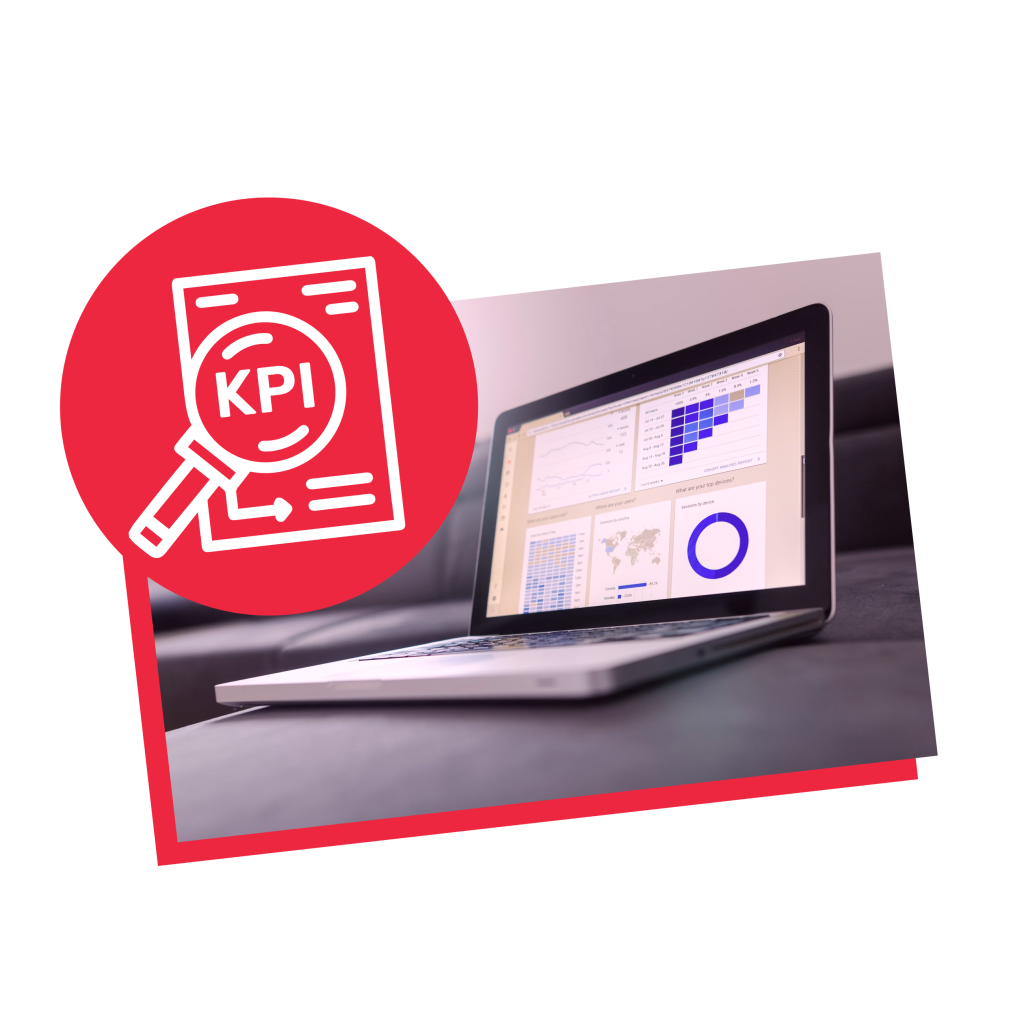
Step 3
Our Analytics team has double-checked that tracking is working properly, then identifies KPIs to reach for and recommends budgets and audience targeting to reach them based on historical data.
Step 4
Our Email team works with our Copywriting team to come up with the design, messaging, and segmentation strategy for the email blasts that will be sent and builds the emails using dynamic discount codes, which will be sent to newsletter subscribers the whole week (to ensure any last minute signups still get the opportunity to take advantage of the sale!).
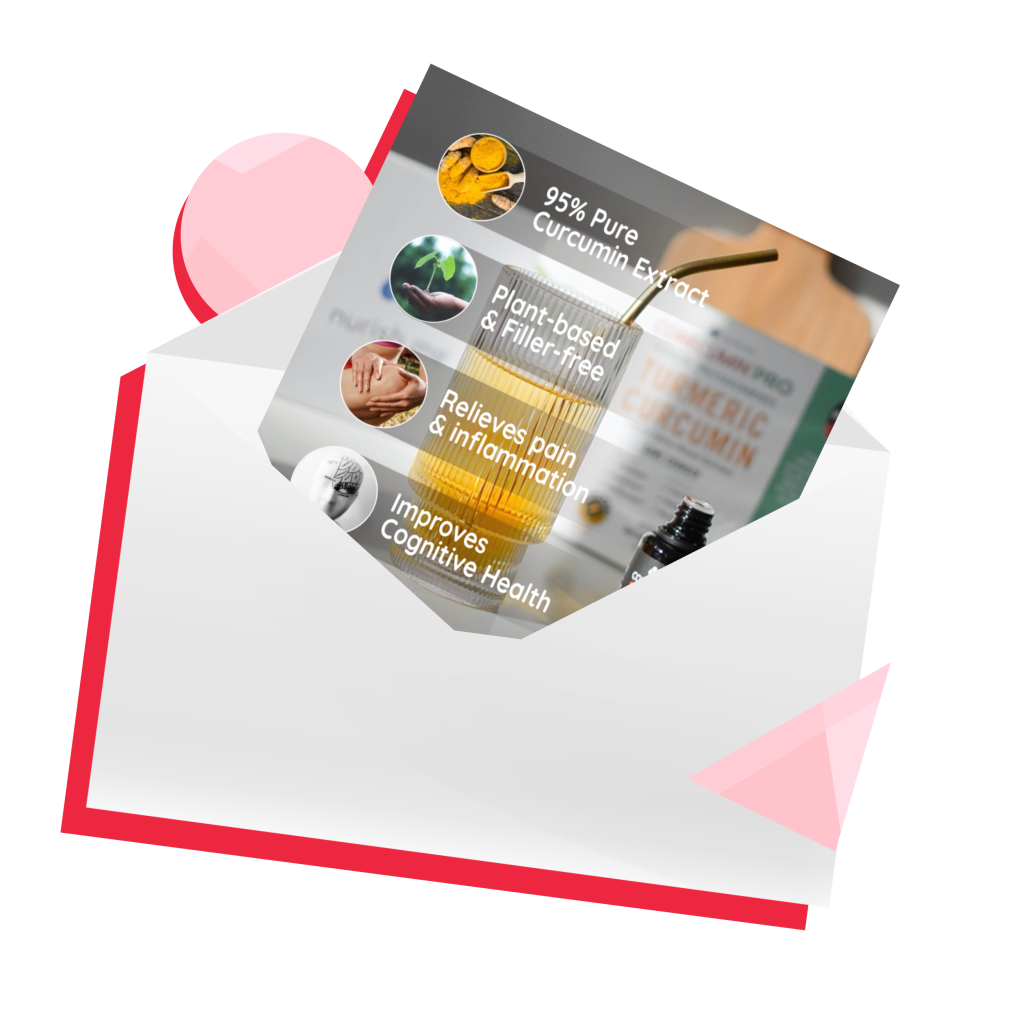

Step 5
Our Email team sends the copy and design files to our Ads Team and our Organic Social team for their use.
Step 6
Our Ads team will create remarketing ads leveraging the same design assets and copy, tweak them for advertising use, and will only target a custom audience made of newsletter subscribers, reminding them to grab the unique discount code they received via email.
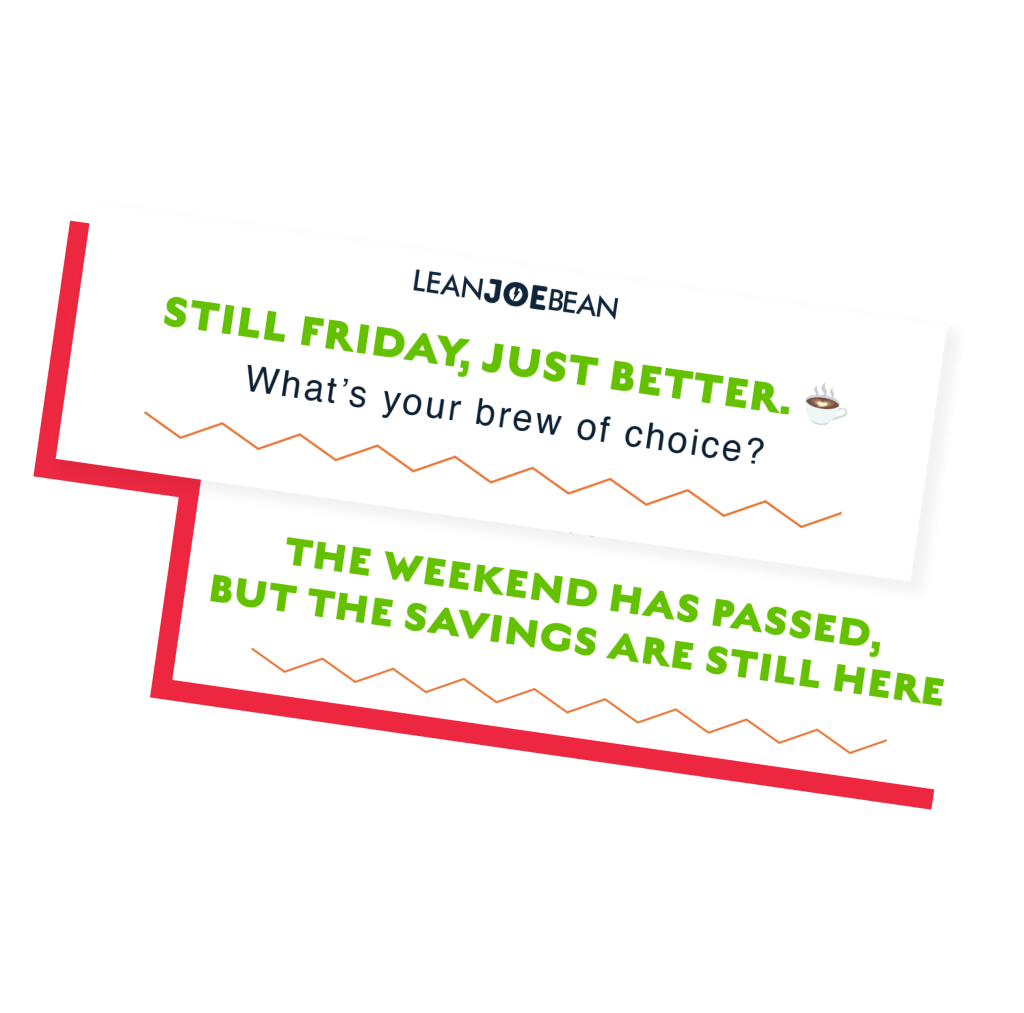
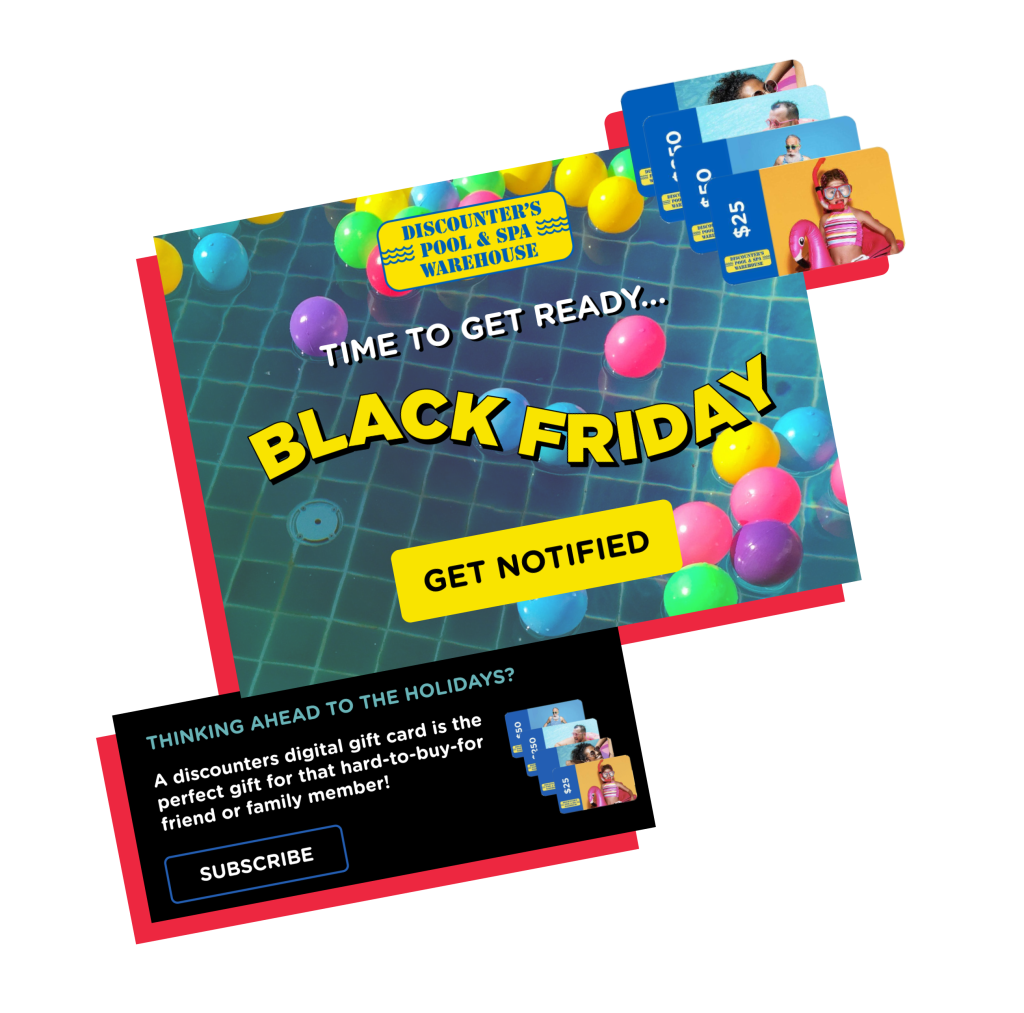
Step 7
Our Organic Social team creates and publishes social posts that hint at a special sale for those who sign up for the newsletter, encouraging those not yet subscribed to do so before time runs out.
Step 8
Our Web team works with the Email team to ensure that there are pop-ups and CTAs that appear to offer the 30% off to newsletter subscribers, to encourage signups.

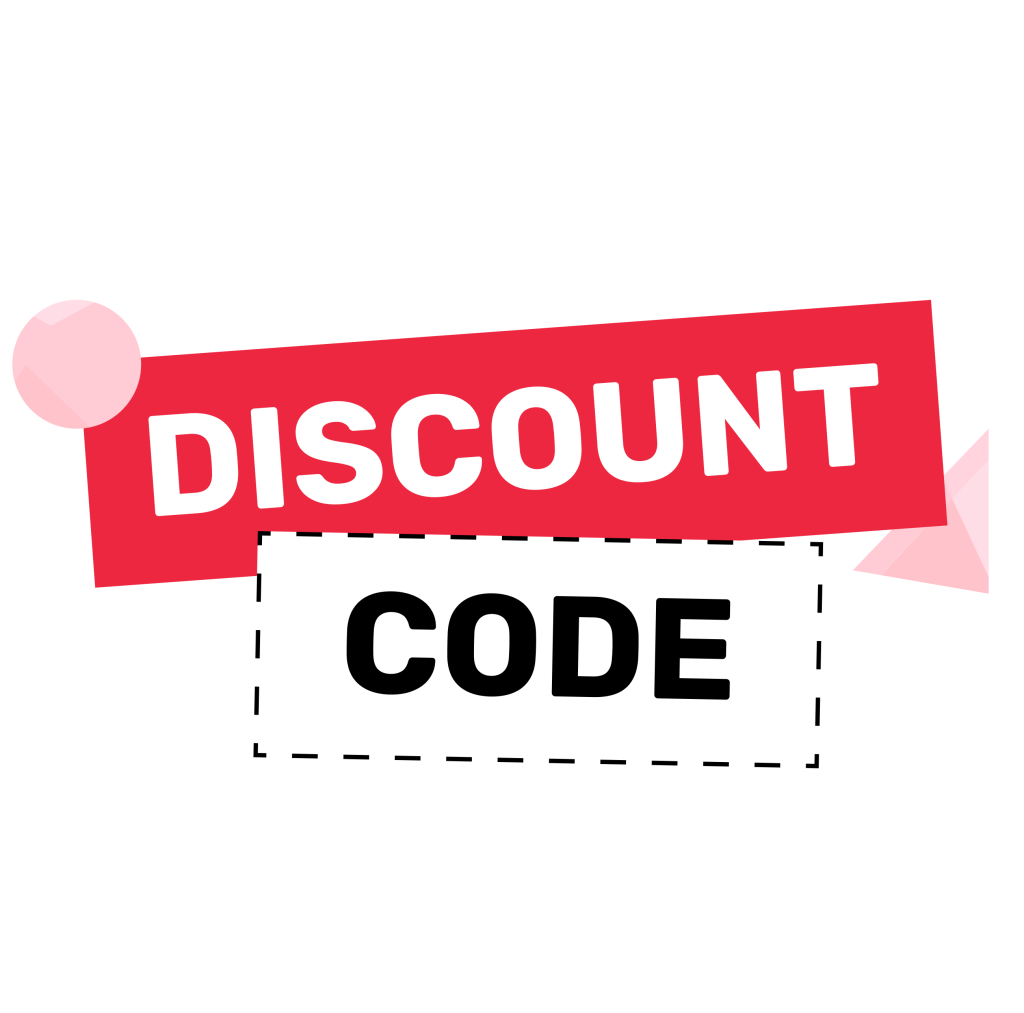
Step 9
Our CS team is briefed on the sale parameters, knowing that those eligible would have received a unique discount code just for them, and that if anyone is asking about the sale but doesn’t know the code, telling them to sign up for an email to receive it before it’s over.
Step 10
Our Fulfillment team is briefed that there will be an influx of orders during the week leading up to BFCM and informs them of which products are most likely to be sold so that they can prepare.

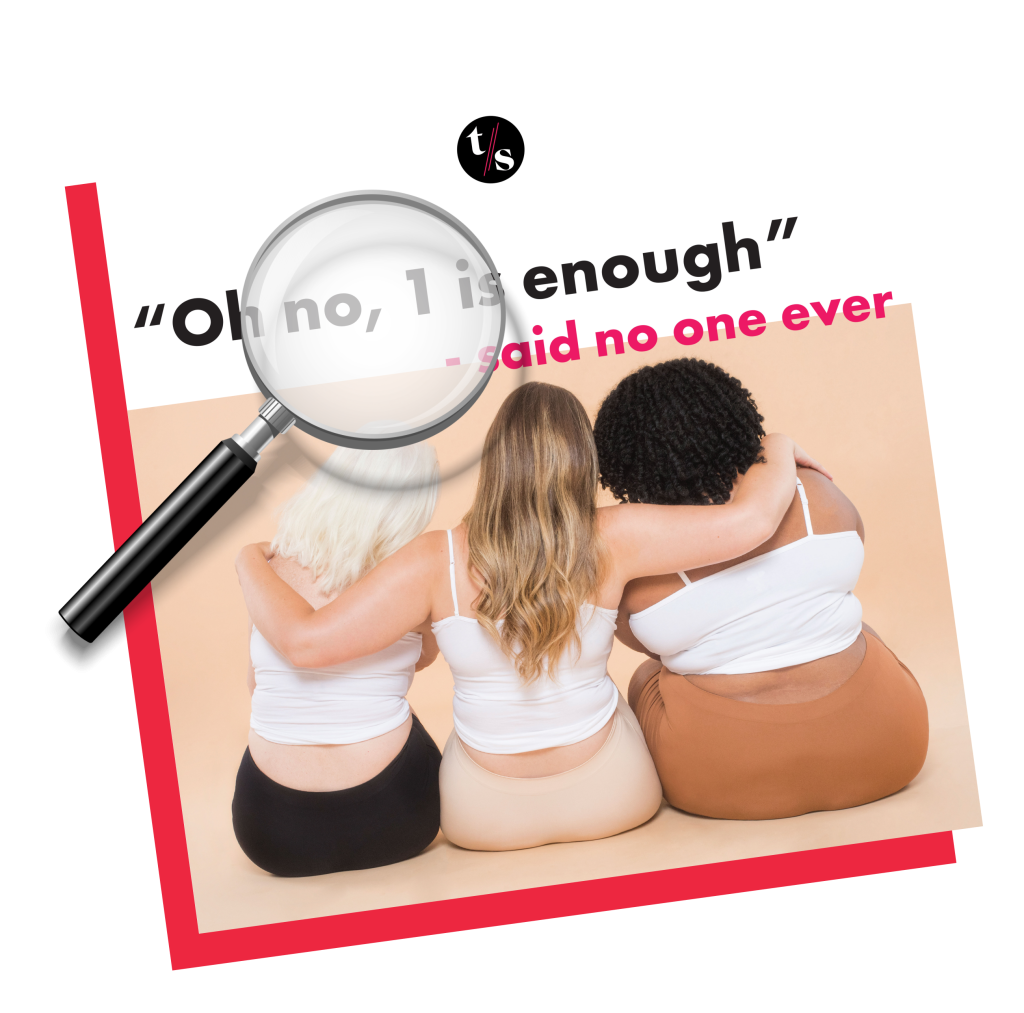
Step 11
Our Marketing team (made up of all the service verticals) puts together all the deliverables and preps them for our proprietary “Last Eyes Process,” done by our CS team to ensure that each and every deliverable looks good, makes sense, that it works (across devices and screen sizes), and that it checks off all the action items from the campaign brief. It also ensures our CS team knows what’s being marketed, so they have context when replying to customer questions.
Step 12
We launch the campaign, and our Analytics team monitors the data coming in from our deliverables across channels, making recommendations on optimizations to each team to be made throughout the week:
→ Email A/B test winners are chosen and applied as each new email goes out that week.
→ Ads data tells the Ads team which creative to turn off and whether or not to scale ad spend.
→ Our Organic team recommends to the Ads team to boost the organic posts, since they have gotten great engagement, and boosting could increase ad conversion.
→ Our Web team does spot checks to make sure everything is still running smoothly.
→ Our CS team monitors and handles any customer inquiries, flagging to the appropriate teams as needed.
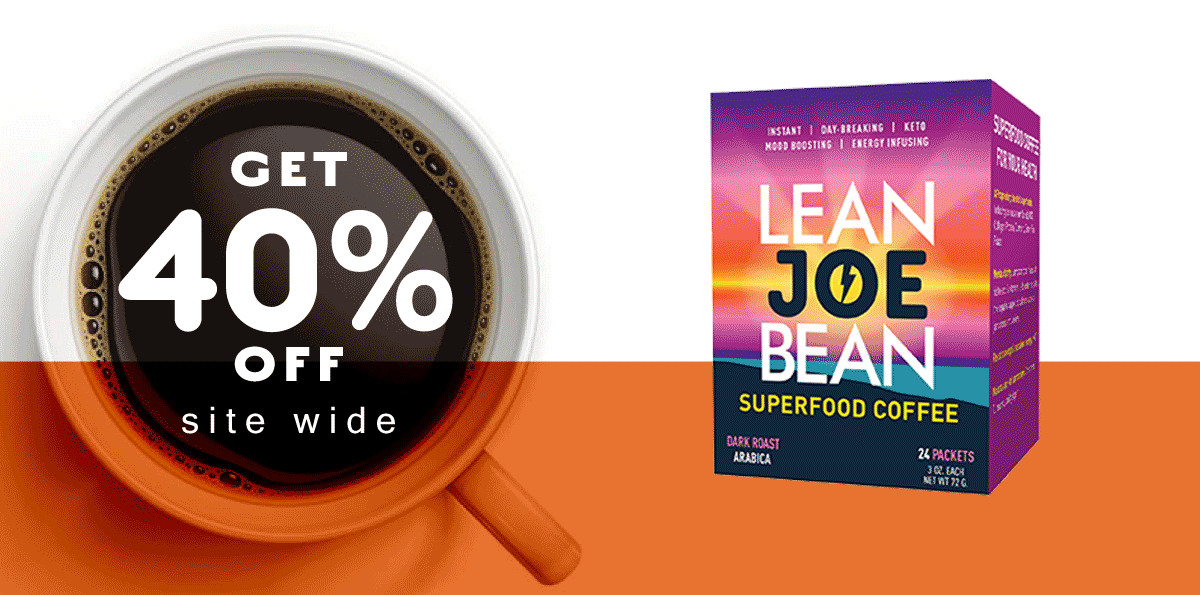
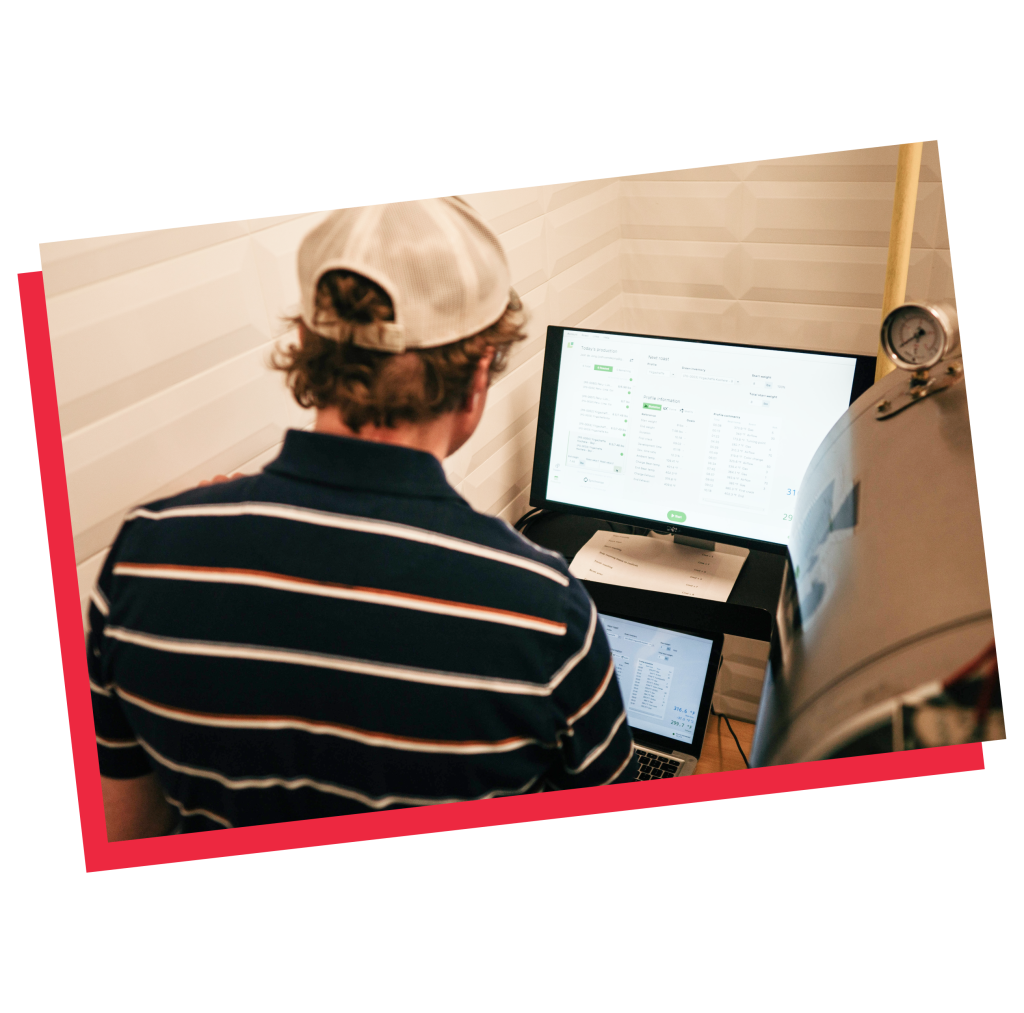
Step 13
Each team takes down their respective sale components (ads, web, etc), and (after the appropriate attribution window) our Analytics team starts pulling data on the sale and analyzing what worked and what didn’t.
Step 14
While our Analytics team is collecting data, the other teams have already been hard at work, running this cycle all over again, to promote the actual BFCM 30% off sale to the general public!

Sounds like a lot to make a pre-BFCM sale happen, doesn’t it? Well, if you don’t have enough resources, or have resources coming from so many different places/teams, it can be a lot to manage. But, if you have a great internal team who has the skills necessary to manage each appropriate sales channel, or have multiple agencies managing everything under the supervision of an in-house Project Manager, it should be much easier than it sounds.
Why promote this sale on every channel? Why not stick to email campaigns only? Well, we could have, and in some cases, that may be what we do. In this case, however, our client is using the pre-sale to grow their subscriber base for the long-term. Potential customers who sign up via email to get 40% off, may not actually purchase at that discount, but at least we can still hit them again with the follow-up BFCM sale. Wait, but the regular BFCM discount is lower, so how does that work? The client has allowed us to honor the 40% off to any customer who “missed” the pre-sale, meaning that those who may have slept on the 40% off at the time, realized that they missed a better deal, and come back asking for it to complete their purchase. This only works because the CS team has been told about this strategy, and are trained and ready to put it into practice. Smart, right?
Full Circle, Baby • Full Circle, Baby •
Pre-BFCM
Notice how the example above is about a pre-BFCM sale? That’s because BFCM, just like all marketing, does not happen in a vacuum. You can’t come up with your BFCM campaign, throw it into the world, and expect amazing results (no matter how great the campaign itself is). Q4 is the most expensive time to market out of any part of the year, so if you haven’t done your work to earn an audience to sell to, it’s going to cost a hell of a lot of money to reach them during BFCM.
Historically, CPMs have doubled if not tripled between October to December in previous years, which is what makes it more expensive to advertise during this period. CPM = Cost per Milli, which is the cost to serve 1000 impressions, where 1 impression refers to 1 time your ad is shown to someone.
In 2022, our Ads team saw CPMs anywhere from $6 (which is incredibly low!) to as high as $80 during the peak season. In the chart below, these are the average CPMs for 50+ ad accounts in the In Social Meta Agency Manager:
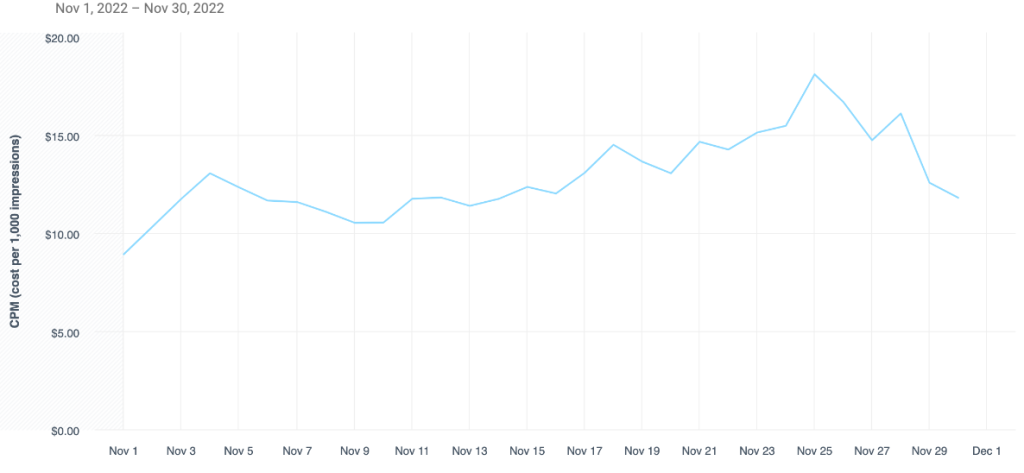
How does that work?
If your CPM is $100 to show your ad 1000 times, and every 1000 times, you make 1 sale for $100, you’ve made a return of $0.
Alternatively, if your CPM is $50 to serve 1000 impressions, and for every 1000 impressions you make 1 sale for $100, you’ve made a return of $50 ($100 sale costs $50 to make, so that leaves you with $50 in gross revenue).
Could CPMs really be as high as $100, you ask? If you or your Ads team are targeting properly and have a great existing customer base or newsletter list to leverage, then it could very easily be below that. However, if you’re trying to reach net new audiences who have never heard of you before, you’re going to see very high CPMs, only to then sell those customers your products at 40% discount! AKA, you’re going to lose a lot of money during the biggest money-making quarter of the year!
How do you know what your CPMs will be? Meta sets these numbers behind the scenes, and the only way to know what your CPM is going to be (and what it will be on any given day) is by advertising! While we can look at historical data to get a sense of what it could be, there’s no telling what it will be until we start. Hence, pre-BFCM planning!
EXAMPLE
One of our In Social clients, Three Ships, has really leaned into the idea of “pre-BFCM” acquisition strategy. Together, we’re helping them acquire a large owned audience now, in order to achieve a low CPA during BFCM.
From now until BFCM, we’re specifically advertising for lead capture and sign-ups with the goal to collect SMS & email subscribers ahead of the BFCM sale. In running these ad strategies now (on top of our other conversion-focused ads), we’re collecting interested audiences at a much cheaper rate than it would cost during the peak season, as well as introducing them to the brand so that they’re “warmed up” by the time the sale hits.
Once BFCM hits, Three Ships is going to shut down their store for the day, and only give their SMS subscribers (whom they’ve been collecting all summer) access to their exclusive sale, not only making these customers feel special but converting them for a much cheaper cost!
This year, we’re trying a similar version of this idea with our client Sunice Sports, and are excited to see how it translates from the skin care niche into apparel. Our friends at Sunice Sports also want you to receive special treatment, so they’ve offered:
By clicking this button, the discount will be automatically applied at check out.
Testing, testing, testing!
Besides employing strategies to build an owned audience you can leverage for BFCM when the time comes, now is the time to do your testing, not when you’re running your biggest sale of the year!
| Here are some key things we recommend testing that can be used for your BFCM sale:
→ Email subject and preview lines: Emojis or no emojis? Discounts in the subject or the preview? ALL CAPS or sentence case? → Websites and landing pages: CTA size, color, font, placement. Animations vs no animations. Copy variations. → Ad audience targeting: broad audiences vs niche audiences. → Ad creative testing: which messaging, value props, hooks work best? Do carousel ads work better than static imagery at Bottom of Funnel? → Subscriber segments: identifying most vs least engaged audiences. Winbacks worth it? → Customer service strategies: hard no’s vs gentle giving in? |
Find out what your potential customers and customers react well to now, and use your findings to build your BFCM plan.
Now does it make sense why, at the beginning of this guide, we mentioned that we’ve already been planning for BFCM for weeks? That’s because we’ve already started preparing and deploying pre-BFCM strategies to grow owned audiences. The summer is the perfect time to spend ad dollars on Pixel data, newsletter sign-ups, offering small discounts on starter kits, and anything that will build your list of potential audiences to market to. Don’t sleep on summer!
OH NO, DID YOU SLEEP ON SUMMER?
Don’t worry, there’s still time!
Reach out to us to find out which strategies we can deploy before it’s too late.

DEVELOPING
5-10 weeks out
So now that you know about our Full Circle Approach to Digital Marketing and how we connect all marketing touchpoints together, and you have your work-back schedules and resources at your disposal, you still need to know what you’re developing within this methodology.
Layout the creative
This is the part of our guide where we tell you to take the insights that you would have collected from auditing your historical messaging and creative and use them while creating your new BFCM messaging and creative. In doing so, you should know which value propositions work best, which types of imagery work best, and whether or not to use emojis in your copy (as silly as it sounds, we’ve seen emojis impact conversion data significantly!)
At In Social, we have a fairly robust creative strategy template that we use whenever we build creative for our clients, but here’s a very basic version you can use to start thinking about your campaign creative (and basic enough to not give away all our secrets!)
| WHO | is your target audience? |
| WHAT | is your key value prop? |
| is the promo you will be offering? | |
| WHERE | will this creative go? |
| will you get assets to develop creative? | |
| HOW | will it look (per channel)? |
| WHY | this promo? |
| these assets? |
Not only should you have data to inform your BFCM messaging and creative that you can add to this strategy chart, but, if you have the working files (.psds, .ais, etc.) and RAW assets from those previous campaigns, you’ve saved yourself a boatload of time. Now, you can duplicate and reuse them for your new creative!
It’s also important to take into account how long you’ll be running your BFCM sale for. If you’re only running it between Nov. 29 – Dec. 2, there’s only so much that you can send out to your customers during that time frame. Even with segmentation strategies (and you should be segmenting your audiences and sending them unique creative!), you can only bug them with marketing so many times in a few short days.
However, if you’re planning to run your holiday sale between Nov. 1st and the last shipping date in December, that’s at least 6-8 weeks of marketing that requires creative—IE: 6-8 weeks of email marketing campaigns and flows, 6-8 weeks of ads being run that will fatigue and need replacing, and 6-8 weeks of social media content to promote the sale and keep it top of mind. It sounds like a lot, but with careful planning, it’ll make the creative development process much simpler.
Source the creative
Once you’ve determined your best performing creative and imagery, now that you’ve found the files to use, and you have a plan for what creative you want to develop, you should be able to identify any creative assets that you’re missing.
For instance, are you offering an exclusive BFCM bundle of products A + B that will be kitted with a fancy box and wrapping paper specifically for this sale? Or are you giving away a gift with purchase (GWP) for anyone who buys product C? What are the chances that you have image assets that show A+B in their BFCM packaging or the GWP in a photo with product C? If these promos are new ideas, then they’ll also require new assets!
Lucky for you, you’ve planned ahead, and can now schedule a photoshoot or video shoot to get proper assets to use in the rest of your creative.
As an extra tip, work with a photographer who will release all of their RAW files to you. At In Social, our clients receive every RAW file we take (unless they’re literally all black and blurry), because, when we produce a photo or video shoot for our clients, they are paying for the whole day + expenses! So, it’s only fair that they receive all the deliverables that come out of what they paid for. We say this because many photographers will only give you a set of “finals,” (maybe 10-20 files) that, when you divide the cost of the photoshoot and all the expenses by the number of photos you actually get, each photo could end up costing you hundreds of dollars each!
When you get all the RAWs, it also gives you the opportunity to be creative with the shoot, such as taking photos that can be later turned into GIFs, simply by moving some set pieces around. Below are examples of GIFs produced for our clients:


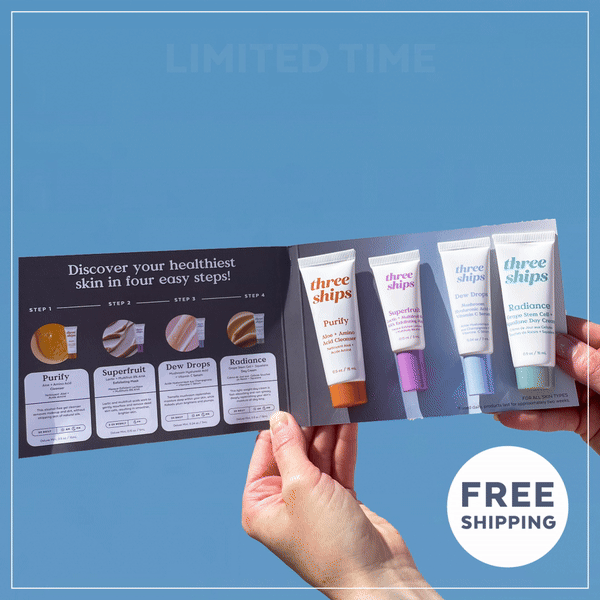
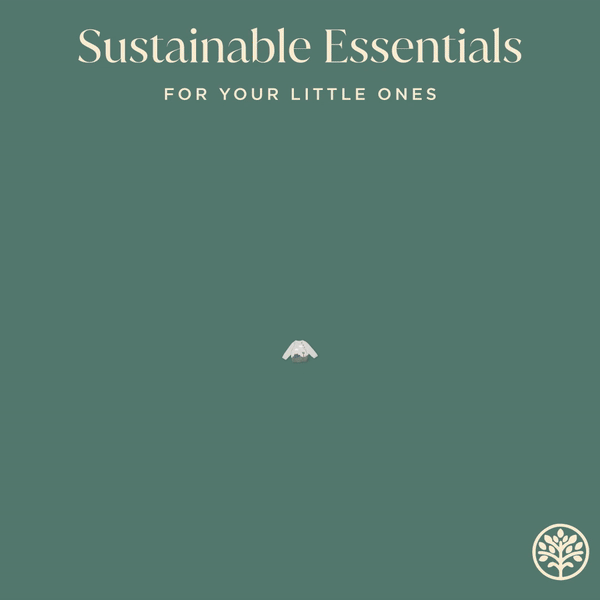
So, now you’re on your way to sourcing high-quality, professional, and beautiful assets to use for your BFCM campaign! Is that all you need? It might be, but for many, that’s not quite all! Commercial-worthy assets can work great for some campaigns, but they work even better when paired with User-Generated Content (UGC) or Influencer content, as well.
Each channel you market on, and each audience you market to, will require content created specifically for that channel. For instance, have you noticed that YouTube ads are essentially just TV commercials with high production value? Did you also notice that TikTok ads are often just someone holding up their iPhone and pointing it at their face or their product with almost no production value? We bet you could find brands doing both! That’s because YouTube and TikTok audiences react and engage with different types of content. It’s up to you as the brand to tailor it so. (That’s why the creative strategy table has “how will it look on each channel”!)
Work on the creative
Now we’re at the easy part—you send your strategy with messaging and assets over to your team to bring the creative to life! Remember, though, if you want one deliverable to drive the messaging and look for the rest of the creative, do that one end-to-end first, then pass it on to the other team members to complete.
If you’re the sole person responsible for making sure your BFCM strategy goes off without a hitch, don’t forget that you’re also the person who has to give approvals or feedback in a timely manner, pass information on between departments, and keep tabs on timelines! If you have a Project Manager or Marketing Director doing that for you, or you’ve hired a full-service agency like us, you should be receiving updates and approval requests from them. If you don’t—ask! Make sure things are moving forward as expected.

Reviewing and tweaking existing marketing
Did you know that, by default in Shopify, customers cannot stack discount codes? The only way this is possible is by using Shopify Plus and actively configuring specific coupons to allow for that. Why do we say this? Because, we don’t want you to forget that your website’s email capture pop-up is offering customers 15% off when they give you their email, but that this discount code won’t work when they use your 30% off for BFCM. Sounds like it should be obvious, right? Ha! Based on our years of Customer Service experience, it is not.
That’s why, once the creative is in development, we go through all the existing discounts, offers, automations, and online store policies that may require different messaging or may need to be turned off during Q4.
| What things do we typically need to change?
→ Your pop-up + Welcome Flow email automation offer: → Instead of offering customers a discount code that they won’t use, or that will cause confusion, update your pop-up and Welcome Flow to tease, and then show, your BFCM sale.
→ Your Abandoned Cart or Browse Abandonment Flows: → Similarly to the Welcome Flow, your year-round offers won’t make sense during this time, so tie your BFCM offer into the messaging, instead. → Bonus: if you’re using Klaviyo as your email tool, and you’ve built the emails in your flows using their universal content blocks system, all you have to do is update the content of the initial block, and it will automatically insert that update in every email the block is used!
→ Your shipping promises and policy: → During the year, you may guarantee your customers 1-3 day ship times, but during the busiest buying and shipping season of the year, that just may not be the case. For instance, your 3PL may warn you that they will need an extra processing day before shipment on all orders during the holiday. You also can’t trust that the carriers will deliver on time, even if they have in the past. → Instead, promise your customers that their orders will arrive by X date, as long as they order by Y date (then, speak to your 3PL, calculate a more than likely carrier delay, then add a bit of buffer in when doing the math).
→ Your return policy: → Your typical return policy may not apply when Q4 dates are put into practice, and you need to make it explicitly clear if things will be different. → Remember, you’re asking people to buy their holiday gifts early, so you also need to make sure they have enough of a return grace period after the holidays for it to make sense for them to purchase from you. If your typical return window is 30 days, but you are asking people to take advantage of the BFCM sale, 30 days will be the day after Christmas, and certainly not enough time for their giftee to request a return! |
Developing on-site experiences
Words of advice: do not make major changes to your Ecommerce store right before BFCM. I have yet to meet an Ecommerce merchant who “only touched one little thing” that then didn’t break the entire site 🫠
If you’re planning to add in some new metafields to your Product Detail Pages (PDPs), or you want to add in a new reviews app like our friends from Okendo, or you’re adding in a product recommendations Quiz from our friends at Octane, or you’re launching a brand new theme just in time for the holidays: do not do it any later than Oct. 1st!
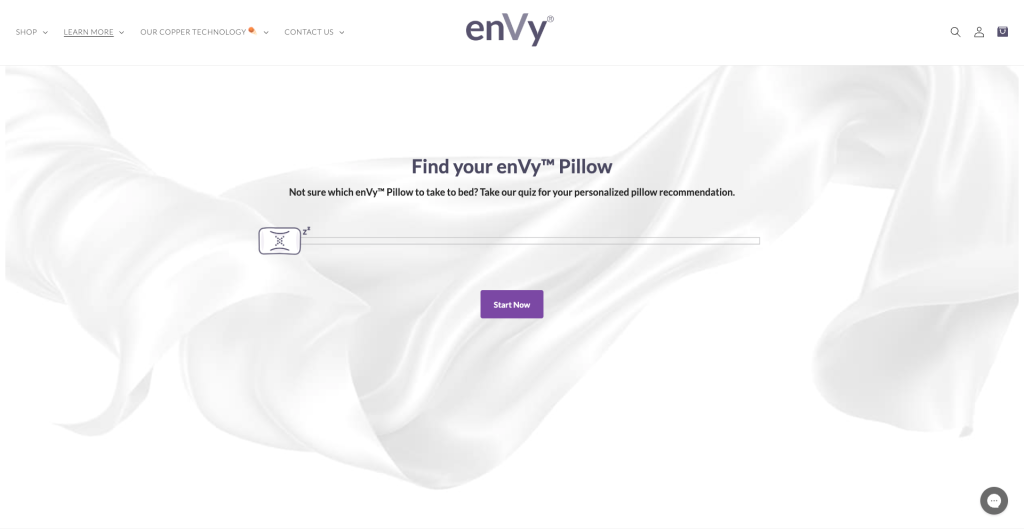
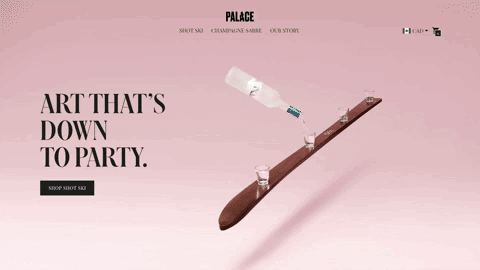
Website development is not a simple task, especially if you are looking to overhaul your entire site for the holiday season! Code changes can equal bugs, big or small, and the last thing you need during the biggest sale of the year is a bug getting in the way of the smoothest customer checkout possible.
Make those changes now so that you have ample time to build, test, fix bugs, test again, QA, fix more bugs, and have it ready for launch. Trust us, doing this now and having it ready and waiting for launch will take a lot of BFCM stress off your shoulders!
By this point, your strategy is locked in, your creative is done, you’ve planned which policies and promises will be updated, along with which changes you’ll be making to active discounts and offers, your BFCM on-site experiences have been built, and are ready to go.
Team check-in
Now that most of the heavy lifting has been done, it’s time to bring all your key players together to brief and align them on the final action plan. This is where you solidify your Full Circle Approach to this BFCM sale, by ensuring team members across each marketing channel know what’s being said, what’s being promised, what is supposed to happen, what is not supposed to happen, and what happens if something that’s not supposed to happen, does.
Building the last of the things
If your BFCM creative development was on schedule, you should now be at the point where everything is ready to build! Email designs are being sliced and diced into templates within your email marketing tool, and now being scheduled into segmented campaigns or updated in your new, yet drafted, flows. Your ad copy and creative has been finalized and is getting built into their respective advertising platforms, per each individual ad placement, while budgets and targets are being set. Your organic social content is being scheduled in the respective publishing platform. Lastly, your on-site experiences should already be sitting pretty and unpublished in your Ecomm platform, so that all your other creative can link back to it.

Proof everything
Sure, all of your creative has been touched by multiple people multiple times, and you’ve approved everything, so it should be perfect, right?
Well, hopefully.
But, if it was that easy, no one would ever send out emails a day too early, or with a discount code that hadn’t been configured properly, right?
That’s why, at In Social, our CEO, Jess Grossman, came up with what we call our “Last Eyes Process.” This proprietary process is our way of ensuring that any deliverable that goes out the door is absolutely perfect. It ensures proper spelling and grammar, that links work, pages load across devices, discount codes are configured properly, things are sent out when they’re supposed to be sent, etc.
Basically, it’s about proofing. Proof everything.
Customer service prep and training
While your BFCM campaign is being built and proofed, the next step is to prep and train your customer service team. Depending on the resources you already had vs. the resources you knew you needed back in the planning stage, you may have hired some new or temporary customer service agents to handle the expected volume increase during your BFCM campaign, who will all need training.
If you’re using a customer service tool like our friends at Gorgias, it will be fairly easy to update your existing macros (pre-written responses), add new tags for trend tracking, create new rules to organize support tickets or chat views, or implement new automations like WISMO questions (where is my order), to align with your BFCM campaign.
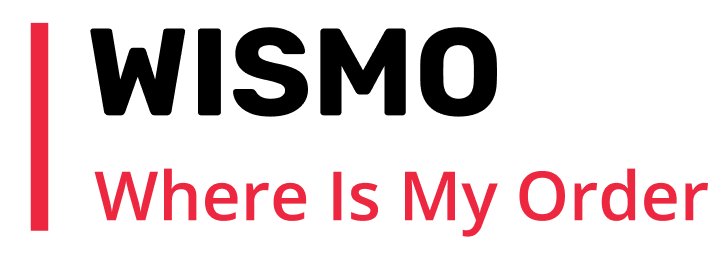
As well, if you have an existing CS process and protocol document (we have “biz docs” for each of our CS clients), all you’ll need to do is add in holiday-specific verbiage and processes.
Remember how you updated your return policy on your website? You should also update your customer service macros, as well as any automations related to those promises. If you have a CS Manager (like our Customer Experience Manager) running your support team, it should be up to them to make all these changes.
Lastly, your CS Manager and/or Supervisors need time to take those new processes they’ve implemented and train your support agents—especially if you’ve hired new staff specifically for Q4. They’ll need training on your brand as a whole (brand voice, product offering, value proposition) on top of your holiday-specific policies and promises.
Your CS team should also have the same brief that your marketing team has, so everyone is on the same page as to what customers are being offered, where they will see those offers, what is not being offered, and for how long.
Fulfillment run-throughs
Have you decided to offer that custom bundle with special packaging and tissue paper that your 3PL will have to kit for you in their warehouse? Test them!
Run an order through your Ecomm platform, have them kit it for you, and ask them to send photos and/or videos back to ensure it’s been packaged correctly.
Seems like a process you can skip? Maybe… but maybe not:
EXAMPLE
In Social was the full-service marketing agency for an Ecommerce brand that sold themed gift sets. We handled everything related to marketing and customer service, and we worked extremely closely with their Director of Operations and fulfillment warehouse.
It was 2 weeks before Christmas, which meant that any gift set ordered before this day would have arrived before Dec. 24th—in time to give as a gift—but any orders placed on or after this date would not arrive in time. This was also pre-pandemic when people got together for in-person gift exchanges. The most popular gift set this particular year had 2 whiskey glasses and a set of metal re-freezable ice cubes, and was flying off the virtual shelves.
It’s December 15th, and our CS team signs in for the day to find support ticket after support ticket from customers saying, “I received the gift set I am supposed to give next week, and the glasses are broken.” Picture after picture sent by customer shows that the warehouse haphazardly threw the glasses into a wood crate with the metal ice cubes free-floating in the box, resulting in hundreds of these gift sets being reduced to piles of glass.
This unfortunate situation occurred because the client didn’t bother to run through gift set kitting with their warehouse to ensure proper packaging, resulting in tens of thousands of dollars lost and hundreds of angry customers without gifts to give for the holidays. If they had only checked, added craft paper, and shipped a test order, this whole situation could have been avoided.
Lucky for them, they had us to help! We were able to make some customers happy by offering full refunds, reshipping the glasses (packaged properly), providing a gift card for the same value, and designing and sending a printable, branded holiday greeting card that jokingly blamed the situation on the company and not the gifter, to (hopefully) get them off the hook for being giftless at their holiday get together. Not everyone was thrilled, but we did get a few laughs, and follow-ups from customers who said we had saved the day!

DEPLOYMENT
CAMPAIGN LAUNCH DAY!
YOU MADE IT
You’re here! And if you followed what we’ve laid out in our guide, it should all be going off without a hitch!
If anything does go wrong? You have your contingency plan! Or, you have your in-house team of professionals or your marketing agency to help figure it out on the fly. Santa knows we’ve had more than our share of clients changing plans last minute, and we’ve made it work. If you have the right team, with the right experience, it’ll all work out!
So you’ve launched, it’s time to sit back and relax, right?
… Sorry to be the bearer of bad news, but… no. At least, not if you want to get the most out of your sale!

MANAGEMENT & OPTIMIZATION
For as long as the campaign runs
When it comes to marketing, there’s no such thing as set it and forget it! Marketing requires constant management and optimization to get the most out of it, especially with such limited timelines.
Playing the long game
If you’ve opted for a longer BFCM campaign, and you’ve followed this guide, you’ve planned far enough ahead and built a good library of creative to be able to promote the campaign for a few weeks. That means, you’ve also given yourself the opportunity to review campaign insights and make optimization to your efforts while they are in play to maximize its success.
Below are 3 potential areas where optimizations could make a huge difference, especially if you have the right resources to help you make them:
ADS |
| Paid ads should be the marketing channel you focus most of your energy on. We won’t know what advertising costs are going to be until we start, so even if you’ve planned ahead, things can change in an instant if your competitors are prepared to spend just as much as you are in ads, if not more. Keep an eye on those CPMs and continually adjust your ad spend as needed, and scale as soon as possible. If your campaigns are generating enough data (Meta takes about 2 weeks to finish “learning,”) turn off ads that aren’t performing. If you planned ahead and have back up creative or the time and resources to create it, launch new ads to replace the ones you’ve turned off. This way, you’ll be able to squeeze as much out of the advertising algorithm as possible.
|
WEB |
| The more you spend on ads, the more site traffic and data you’ll acquire to give you insight to make optimizations elsewhere, such as your website. We only recommend touching your site if you have the right resources to do so without error. If you’re using Google’s GA4, or tools like HotJar to monitor site behaviour, you’ll be able to identify which elements or content is working or not working on your site. Move site content up and down, change the colors of your CTAs, or get rid of sections no one is paying attention to. Your ads will also tell you which messaging and creative are performing best, and you can use that data to optimize, as well. Update your landing page messaging to match the creative that’s working the best by swapping out hero images and copy. |
|
|
| Making data-backed changes to your emails are another way to optimize your BFCM sale. Just because your email campaigns and flows were designed weeks in advance doesn’t mean you can’t go back and make small adjustments. If you’ve sent an email campaign and saw a low CTR, and your next campaign uses the same CTA button, try changing the button’s size, shape, or copy before sending the next one. Low open rates mean that you need to try different subject lines, so try with or without emojis. While we always say test to in advance of BFCM, leveraging small AB tests are still a great way to ensure the best performing email is sent to the most people. Make sure that you’re still keeping an eye on what’s working and not working as you deploy throughout your campaign! |
Planning in advance means that you’ve given yourself, and your team, time to make these optimizations as they present themselves to you. Take advantage of the opportunity to continually improve your once-in-year BFCM sale!
Short and sweet
If you’ve opted for the “BFCM weekend only” sale strategy, and are only running it for a few days, there isn’t too much you can optimize while the campaign is running, other than keeping an eye on all the moving parts to make sure they’re still moving. Otherwise, you may not have enough statistically significant data to make changes that will move the needle in such a short period of time.
That said, if you are investing thousands and thousands of dollars into your paid marketing efforts across those few days, you may see some immediate trends telling you which ads to turn off and which to keep on, which email subjects lines have worked or not worked, and whether or not on-site CTAs need to be adjusted. Make those small adjustments if you can.
Otherwise, hold your breath and trust the process! 🤞
 |
IMPORTANT: Meta’s algorithm only lets you increase your ad spend by 20% at a time. Doing it faster will break their AI. (We know, it seems counterintuitive to their business model, right?!) Make sure you’re keeping this in mind as you plan your campaign! |
EXAMPLE
During one BFCM, our team was able to make our client 16x return on their ad spend! That meant, for every dollar we spent, the client made $16! We had more than paid for our marketing labor costs, and with BFCM quickly coming to a close, we asked the client to allow us to increase our ad spend.
The client came back to us and said, “Hmm, I don’t think it’s necessary,” not fully understanding what ROAS meant, and did not approve the budget increase.
At the end of the BFCM sale, this client left almost $100,000 on the table by not allowing us to scale the ad spend.
Pump it!
If over the course of your BFCM sale (even the short ones), your conversions are trending up and your ROAS with it, pump it. Put as much money in as you can to keep those orders coming. Wait, you only planned for $100,000 in ad spend, and you’ve already almost hit it?
If you’re making enough per sale to more than cover the cost of the acquisition (aka, getting a positive ROAS/Return on Ad Spend), ignore what you budgeted for. As long as you have the cash flow to keep you spending, the more cash you pump into your BFCM advertising campaign, the more you’re going to make!


DEBRIEFING
Once the BFCM sale is over
You strategized, you planned, you thought “Full Circle” and your team optimized the BFCM campaign until the day you turned it off, and you hit 10% above your BFCM order goal.
PHEW, you did it! Time to breathe, relax, and enjoy the holidays with your family and friends.
…
Ok, are you done breathing?
Good, because the process is going to start all over again!
Since you’ve read this guide, you know that now it’s time for your Q5 plans to be deployed and you’ve followed our steps to make it happen. You also know that, in only 2 short weeks, your New Year’s campaign is going to launch, but since you’ve read our guide, you’ve been planning since October. You’ve got this!
But where do we land with BFCM, now that it’s over? It’s time to debrief with your team(s) to learn what worked well and what didn’t. Time to review the data to see which ads performed best, and which didn’t. It’s time to look at which products sold out and which didn’t. And, most importantly, it’s time figure out who your BFCM buyers were. It’s time to determine the type of customer your BFCM buyers were, because you may be surprised to know, they aren’t your typical customer profile. And because of this, your marketing efforts from here may need to change.
Think about this: were people buying your products for BFCM as gifts to give others or gifts for themselves? Were your BFCM buyers the type of customer who would normally buy from you, or was it their grandma who only knows about your brand because their grandchild asked for your product for the holidays? Or were your BFCM buyers moms who bought a great skincare line for their daughter, hoping she’d try it out first before taking the plunge herself? You need to identify which customers would never buy from you for themselves, which customers bought from you for others before trying for themselves, or, which customers used the holidays as an excuse to treat themselves. Whichever category your BFCM customers fall into, they’re going to need different marketing messages as you reach them throughout the rest of the year. Whomever your BFCM customers are, your job is to find out and segment them for marketing personalization.
How do you find this out? Well, that’s a guide for another time.
GOT BFCM DOWN BUT CAN’T EVEN STOMACH THINKING ABOUT 2025?
Don’t worry, you’ve got us!
Reach out to us to talk about working with us in 2025.

FIN
Until next year
Now that you’ve read through what we hope is our handy guide to BFCM, you now know how to pull off a kick-ass BFCM sale. You’re going to take what we’ve provided and put it into practice, either with your in-house team or your freelancers. Or, you might even give us a shout.
Either way, as a thank you for downloading this guide, In Social now presents you with our holiday gift: Exclusive software discounts from our friends in the Ecommerce app ecosystem!
Full disclosure, all the apps listed here are companies that we work hand-in-hand with as an agency partner!
As an agency partner, we offer managed services for merchants using these apps, we work together on strategizing and deploying the best way to leverage the technologies here to improve on-site experience and increase sales conversions, and we just generally think that the people behind these apps are good people whom we love to work with. It also helps that all these apps actually make Ecommerce that much better and we love using them!
Thank you again, enjoy, and happy (almost) holidays from the In Social team 💕
IN SOCIAL’S TECH STACK & EXCLUSIVE OFFERS!

GORGIAS
Customer Service Support Platform
Our friends at Gorgias are offering our clients 2 months to use “Automate” for free (until the end of Q3). Make sure to create an account now to redeem this offer, and stay tuned for more offers in Q4!
Why use Gorgias?
→ Centralize all your support tickets in one place: Have all your customer’s data displayed when you’re talking to them. Edit orders, modify subscriptions, and refund payments without leaving your helpdesk.
→ Increase conversion rates by turning visitors into shoppers: Give your visitors a personalized shopping experience—no matter where in the world they are.
→ Engage with customers before they hit your website: Respond to customers asking about your products on your ads and posts, increasing your sales and ad effectiveness by the equivalent of a 5% increase in ad-spend.
→ Unlock sales from support via live chat, text, and social media: Your customers won’t always be on your website. Track all sales generated by support agents over text messages, social media answers, and live chat conversations on your website.
→ All the integrations you need to stay streamlined: See customer behavior across various engagement opportunities such as leaving reviews, responding to SMS campaigns, their loyalty status, which subscriptions they are signed up for, how many times they’ve called you, and more all through Gorgias’ integration library.
NEED MORE CX SUPPORT FOR Q4?
Ask about our Canadian-based, university educated support team and our pay-as-you-go billing model for tickets, chats, social media community management, and phone support!

VIDEOWISE
Shoppable On-Site Video
To help you convert more sales through on-site video experiences, our friends at VideoWise are offering you a 60 days free trial to A/B test Videowise on your site and 25% off on all plans for the rest of 2024, if you sign up using this link!
ASK ABOUT OUR THEME CUSTOMIZATION SUPPORT
Not sure how to implement video on your store’s theme? Ask about our pay-by-the-hour website management options

AIRCALL
Customer Service VOiP
Our friends at Aircall have offered 2 months free on an annual contract (for the first year)! To redeem this offer, please reach out to us at getstarted@insocial.ca.
NEED MORE CX SUPPORT FOR Q4?
Ask about our Canadian-based, university educated support team and our pay-as-you-go billing model for tickets, chats, social media community management, and phone support!
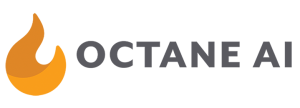
OCTANE
First-Party Data Collection / On-Site Surveys
Our friends at Octane have offered a limited time 30 day free trial when you sign up using this link!
Why use Octane?
→ Personalized Shopping Experience: their quizzes can gather data about a customer’s preferences, needs, and interests. By understanding their unique requirements, the Octane AI can recommend products tailored specifically to them, creating a personalized and engaging shopping experience.
→ Enhanced Customer Engagement: Octane AI quizzes are interactive and fun, capturing the attention of users and encouraging them to spend more time on the website or app. Increased engagement can lead to higher conversion rates and customer loyalty.
→ Increased Conversion Rates: By recommending products based on quiz responses, Octane AI quizzes can significantly boost conversion rates. When customers find products that align with their preferences, they are more likely to make a purchase.
→ Collecting Zero-Party Data: Octane AI quizzes provide an opportunity to gather zero-party data, which is voluntarily shared by customers. This data can be more accurate and insightful than third-party data, helping businesses understand customers better and refine their marketing strategies.
NOT SURE WHAT QUIZ TO BUILD?
Ask our marketing team to help strategize, design, develop, and implement a custom product recommendation quiz for your store!
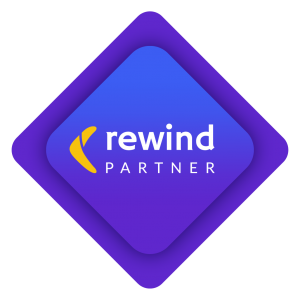
REWIND
Site Backups
Our friends at Rewind have offered 2 months free of either Rewind Backups for Shopify or Rewind Backups for BigCommerce. You can use this link to take advantage of this offer!
ASK ABOUT OUR SITE MANAGEMENT SERVICES
Want to make changes or customizations to your website and need developer support? Ask about our pay-by-the-hour website support options!
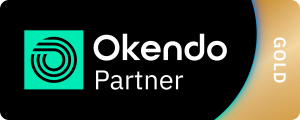
OKENDO
Customer Marketing Platform
Okendo is an all-in-one reviews, loyalty, quiz, survey, and referral customer marketing platform. It helps merchants drive revenue by turning shoppers into Superfans, allowing merchants to showcase high-impact social proof, collect continuous customer insights, increase brand affinity and drive conversions.
Get your first 3 months free on all Okendo products on a monthly or annual term when you sign up before 9/30/24. Book a demo to learn more, reach out to us to get you set up at bfcm@insocial.ca.

REFERSION
Affiliate Management Software
Scale your brand’s affiliate, influencer, and ambassador programs with Refersion from Pantastic and easily get started by transferring your existing affiliate, or recruit new partner, manage and control your programs with custom offers, automated commissions calculations, accurately track performance using first-party data tracking, and leverage their 30+ integrations.
Refersion is offering 10% off their list price, and 0.25% off metered pricing on their Enterprise plan. Sign up using this link!

DATASHIPS
Marketing Consent Collection and Optimization
Dataships optimizes the Shopify checkout and provides a more effective, streamlined and high-converting email opt-in, leading to immediate list growth in Klaviyo. This helps merchants create bigger email and SMS consented marketing lists, which drives incremental revenue uplift, along with audit-ready compliance records. They often see an 8x ROI in only 4 months from their generated lists!
Sign up to try Dataships for 14 days free, and get 20% off for the first 6 months! Make sure to mention you came from In Social to get the discount.

ATTENTIVE
SMS and Email Marketing Platform
Attentive is the SMS and email marketing platform for leading brands, designed to optimize message performance. Infusing intelligence at every stage of the consumer’s purchasing journey, Attentive empowers Ecommerce merchants to achieve hyper-personalized communication with their customers on a large scale. Leveraging a mobile-first approach, two-way conversations, and enterprise-grade technology, Attentive drives billions in online revenue for brands around the globe.
Get a 60-day free trial when you sign up for Attentive! Email us to get the deal: bfcm@insocial.ca

WONDERMENT
Shipment Tracking & Reporting
Unlock the power of proactive CX with Wonderment: the new way to build customer loyalty. De-stress your team and delight your customers with transparent order tracking, instant issue detection, and insight into every order.
Our friends at Wonderment are currently offering a 30 days free trial (until September 15th) of their service, if you install and upgrade to a paid Wonderment plan. After that point in time, it will be reduced to a 2 weeks of free Wonderment service.